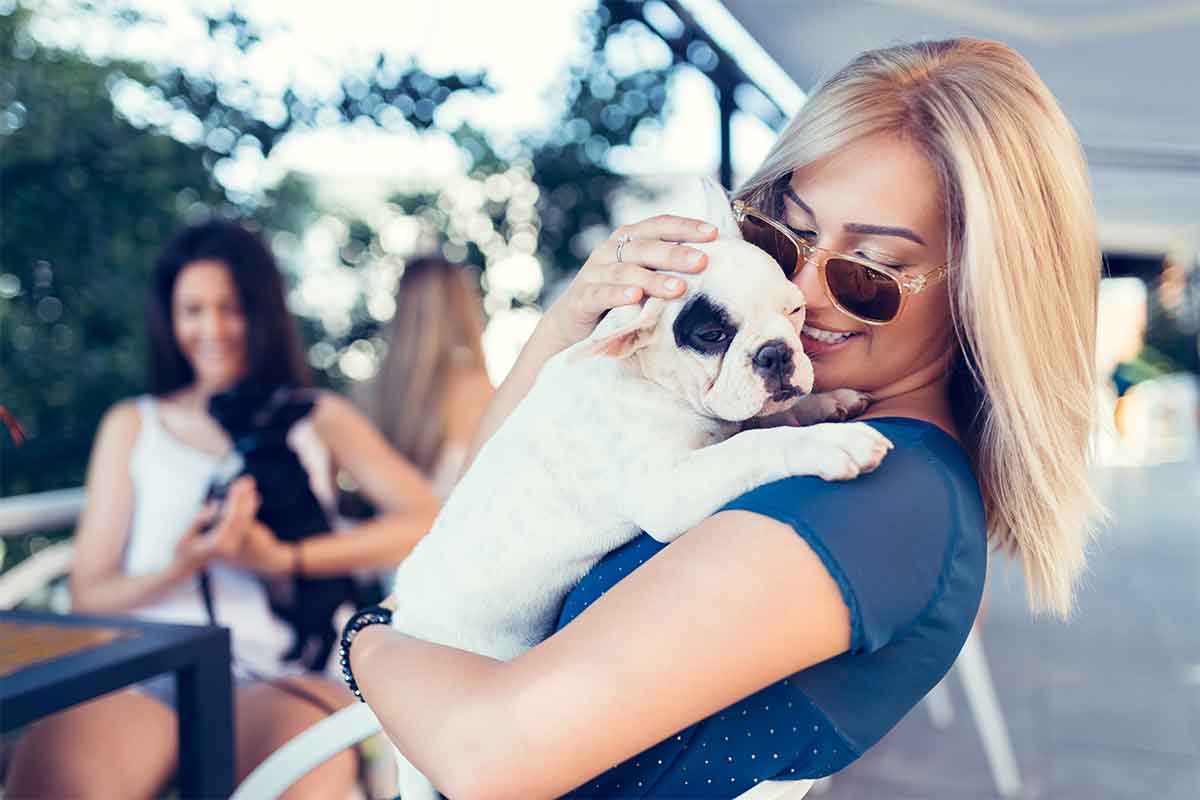What makes one dog outgoing, friendly, and great with people, while another dog can be shy, timid, or downright unfriendly around strangers? A lot has to do with how and when the dog was socialized as a puppy. The first couple months of a puppy’s life helps to shape his personality and how he will deal with people, places, and things he comes into contact with as an adult dog. Have a conversation with your vet prior to initial exposure to new people, places, and other animals to discuss your pet’s health status.
Socializing Your Dog with People
An essential part of your dog being able to successfully live with humans and your family, is learning how to meet new people in an enjoyable and safe manner. It is important, especially for puppies and young dogs, to have a wide variety of positive social experiences with new and different people of varied age groups.
Meeting new people should be part of your routine, as long as your dog is comfortable. If you see your dog seeming shy or skittish in social situations, slow down, and let them approach gradually on their own. Verbally praise and offer a high value treat after they approach. Don’t force an interaction or lure your dog with food. Allow them to approach on their own and then be rewarded.
Pay particular attention that your dog is not overwhelmed by children, and that all interactions with children are actively supervised by an adult. Never allow your dog to be alone with children under the age of twelve, even your own. It’s also a great idea to practice wearing hats, sunglasses, and coats, so your dog gets used to these things.
Socializing Your Dog with Other Dogs
You want your dog to get along with other dogs. So you’ll need to provide lots of opportunities for meetings with strange dogs. The best places can be a force free, family friendly dog training class. A reward based dog trainer can help facilitate multiple dogs meeting each other in a positive environment.
If you notice that your dog is getting overwhelmed by another dog(s), then move him out of the situation. Slow things down and let your dog choose to approach the other dog(s) on their own time. If it doesn’t look like your dog is ready at that particular time to meet a new four-legged friend, then stop and try again tomorrow.
Dog parks may not be the best place to start socializing your puppy, as many dogs can be overwhelmed in dog parks.
Socializing Your Dog to Things
Your dog needs to learn that things they encounter in the world are enjoyable and safe. You don’t want your dog to freak out every time they see the vacuum cleaner come out. So you’ll need to introduce your dog to these things and the noises they make in a positive situation.
Exposure to new things should be a part of your daily routine, as long as your dog is comfortable. Coming into contact with loud, big machines is definitely a time that you’ll want to have your pocket or treat pouch filled with high value treats. Although you don’t want to force an interaction or lure with food, you can make the interaction more positive with lots of verbal praise and food treats, as long as your dog is not expressing distress and is showing interest in the item they are being introduced to.
It’s also a great idea to practice having your dog walk on different types of surfaces and different types of flooring.
Socializing Your Dog to Different Places
Puppies and young dogs need to be taken to different places around your home and community. Again, this should be part of your routine, as long as your dog is comfortable. Practice taking your puppy to places that allow dogs, such as pet stores, your veterinarian’s office, pet friendly stores, downtown areas, your groomer, etc.
As always, watch your dog’s body language and don’t push them if they are unsure or scared. Allow your dog to approach and interact on their own, and then be rewarded, instead of being lured with food to interact.
In the last installment of the “Welcome Home” blog series, we’ll look at what happens when things go wrong.
Have a puppy that you’ve socialized? Share with us what worked and what didn’t as you helped introduce your puppy to new experiences.
This article was reviewed/edited by board-certified veterinary behaviorist Dr. Kenneth Martin and/or veterinary technician specialist in behavior Debbie Martin, LVT








